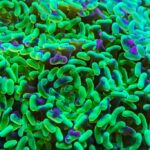Within Culture Science portfolio Sacco System selects science-based microorganisms, that offer the utmost performance, innovation, and functional characteristics to enhance human well-being across all stages of life.
At the forefront of their dedication to women’s health, one microorganism, Lacticaseibacillus rhamnosus CA15, isolated from the vaginal ecosystem of a healthy woman, has emerged as a key player with remarkable probiotic properties, pivotal in maintaining a balanced vaginal microbiota and in the treatment and prevention of vaginal dysbiosis.
CA15: A Multifaceted patented probiotic
Scientific research of the CA15 strain has revealed a wide range of remarkable attributes. In vitro models have highlighted its antimicrobial ability against various pathogens, including Escherichia coli, Candida species, Gardnerella vaginalis, Listeria monocytogenes, Pseudomonas spp., Staphylococcus aureus and Streptococcus agalactiae. Furthermore, CA15 possesses the ability to inhibit the formation of biofilms by species ascribed to the Candida genus, making it an invaluable asset in combating infections associated, as vulvovaginal candidiasis. The strain’s capacity to produce hydrogen peroxide, lactic acid and other organic acids bolsters its ability to thwart pathogenic bacteria’s colonization in the vaginal environment, contributing significantly to the maintenance and restoration of vaginal microbiota’s homeostasis. Hydrogen peroxide acts as a microbicide, while lactic acid, by acidifying the vaginal environment, serves as both a virucide and microbicide, in addition to its role as an immunomodulatory agent. Being able to survive the gastrointestinal transit, the oral administration of CA15 it is likely to allow its capability to translocate and exert beneficial effect in counteracting vaginal dysbiosis, as also demonstrated by the detection of the strain at vaginal level
Clinical Validation: an effective intimate support
To validate the preclinical findings in a real-world setting, a double-blind randomized controlled study was conducted. Sixty women of reproductive age experiencing symptoms of vaginal dysbiosis, as confirmed by clinical and microbiological evaluations, were enrolled and randomly assigned to two groups. One group received 10 billion CFU/day of the probiotic strain L. rhamnosus CA15 orally for ten consecutive days, while the other group received a placebo.
All signs and symptoms of vaginal dysbiosis, such as leucorrhoea, burning, and vulvar vaginal erythema/edema, exhibited a statistically significant reduction in the probiotic group. The Amsel criteria and the Nugent score also showed marked improvement, with instead no significant changes observed in the placebo group. Interestingly, the improvements observed in the probiotic group persisted even during the washout period, 30 days after the treatment concluded.
In terms of vaginal microbiota composition, all participants initially exhibited a low abundance of lactobacilli and presence of vaginal pathogens, indicative of a dysbiotic microbial ecosystem. Of note, the oral administration of the CA15 strain for ten days led to a significant reduction in pathogenic microorganisms and a significant increase in the population of lactobacilli. The stability of the vaginal microbiota composition even 30 days post-treatment suggests that the equilibrium achieved during treatment is maintained in the long run.
Empowering Women’s Quality of Life
The exceptional ability of the probiotic strain CA15 to restore vaginal microbiota’s homeostasis and alleviate symptoms associated with bacterial vaginosis and vulvovaginal candidiasis positions it as a pivotal support system for improving women’s quality of life. Beyond treating infections, CA15 is suggested to be promising in preventing recurrence in susceptible individuals, being a valuable ally for women’s health and well-being.
Reference
- Wang Z, He Y, Zheng Y. Probiotics for the treatment of bacterial vaginosis: A meta-analysis. Int. J. Environ. Res. Public Health. 2019;16(20):3859.
- van de Wijgert JHHM, Verwijs MC. Lactobacilli-containing vaginal probiotics to cure or prevent bacterial or fungal vaginal dysbiosis: A systematic review and recommendations for future trial designs. BJOG Int. J. Obstet. Gynaecol. 2020;127(2):287-299.
- Pino A, Bartolo E, Caggia C, et al. Detection of vaginal lactobacilli as probiotic candidates. Sci Rep. 2019;9(1):3355.
- Amabebe E, Anumba DOC. The Vaginal Microenvironment: The Physiologic Role of Lactobacilli. Front. Med.2018;13(5):181.
- Pino A, Vaccalluzzo A, Caggia C, et al. Lacticaseibacillus rhamnosus CA15 (DSM 33960) as a Candidate Probiotic Strain for Human Health. Nutrients. 2022;14(22):4902.
- O’Hanlon DE, Moench TR, Cone RA. In vaginal fluid, bacteria associated with bacterial vaginosis can be suppressed with lactic acid but not hydrogen peroxide. BMC Infect Dis. 2011;19(11):200.
- Nugent RP, Krohn MA, Hillier SL. Reliability of diagnosing bacterial vaginosis is improved by a standardized method of gram stain interpretation. J. Clin. Microbiol. 1991;29(2):297-301.
- Amsel R, Totten PA, Spiegel CA, et al. Nonspecific vaginitis. Diagnostic criteria and microbial and epidemiologic associations. Am J Med. 1983;74(1):14-22.
- Donders GG. Definition and classification of abnormal vaginal flora. Best. Pract. Res. Clin. Obstet. Gynaecol.2007;21(3):355-373.
- The WHOQOL group. Development of the world health organization WHOQOL-BREF quality of life assessment. Psychol Med. 1998;28(3):551–558.
- Rapisarda AMC, Pino A, Grimaldi RL, et al. Lacticaseibacillus rhamnosus CA15 (DSM 33960) strain as a new driver in restoring the normal vaginal microbiota: A randomized, double-blind, placebo-controlled clinical trial. Front Surg. 2023;9(9):1075612.
















